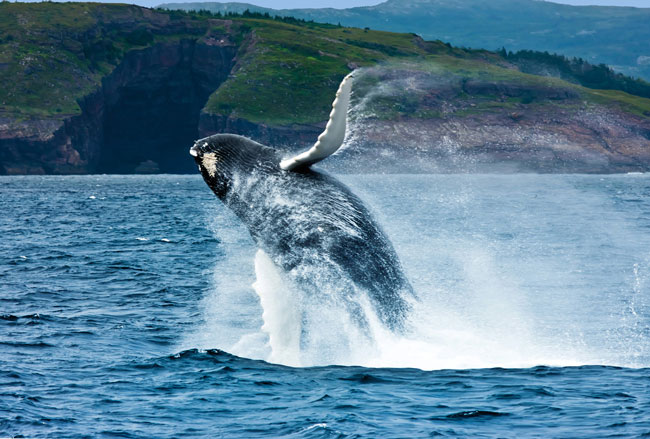
Dealing with the Ocean Waves
I gripped the rope handle and braced my leg against the rubber side of the 25-foot Zodiac as we careened over the ocean waves.
My husband, Joe, and I, along with four other travelers, were whale watching off the coast of Trinity in eastern Newfoundland.
I scanned the sea’s broken surface searching for telltale spouts.
Our Plan
The plan for that day was supposed to include a leisurely hike on the Skerwink Trail, 12 miles away in Port Rexton, followed by a drive up to Elliston to see the puffins —one of my nonnegotiable wishes for our trip to the Rock.
Then up to Bonavista to see the often-photographed red and white lighthouse. Elliston was hosting its annual Puffin Festival that week. Who doesn’t want to go to a puffin festival?
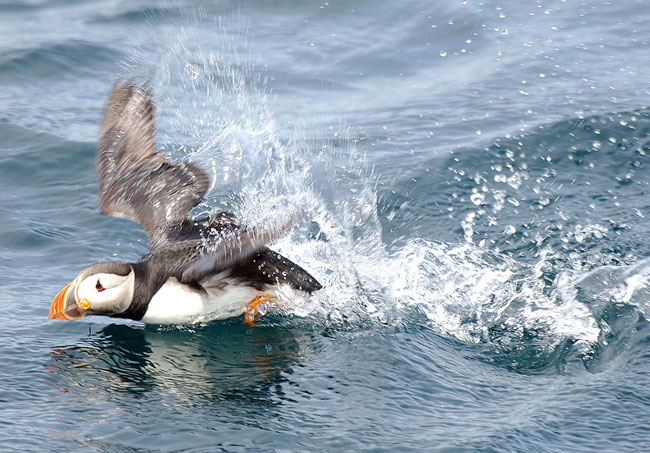
Whale Watching in Newfoundland
Instead, we made a spur-of-the-moment reservation after seeing an Eco-Tour sign, festooned with photos of all the whales and birds they had encountered the previous day.
So there I was in a small, dark boathouse, wrestling my way into a bulky survival suit and digging through a pile of musty, slightly damp gloves. Staggering stiff-legged in the suit, I waddled with my fellow adventurers.
My husband, a young British couple on summer break from university, and a pair in their 30s, he from London, she from Toronto — to the bobbing dock where our awaiting vessel was tethered.
Watching the Whales
After guiding the bucking Zodiac for about 20 minutes, Captain Bob, our Eco-Tour guide, pointed off the boat’s bow and said, “There, at two-thirty.”
We all looked out into the troughs of slate blue waves. Thousands of silvery capelin shimmered in the water, heading for the beaches to spawn.
A dark, glistening hump emerged behind them. As the humpback slowly made its way toward us, a second whale’s back arched just behind the first one. We watched, spellbound.
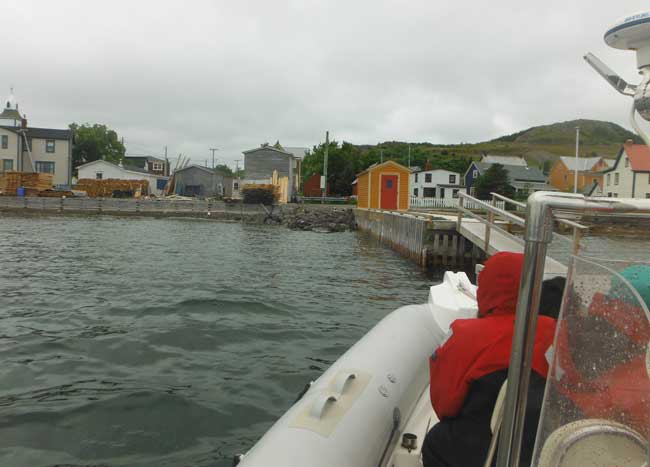
The tiny, pelagic fish were late this summer, the result of the previous year’s poor weather and feeding conditions.
Town after town we visited on the Rock celebrated the “rolling” of the capelin — or lamented their absence — for these schools are harbingers of financial fortune.
Sandy beaches covered with writhing fish, with hundreds more arriving with each wave were once a sign that the whales were close behind and humpback season would begin.
Now these wriggling bodies signaled the arrival of tourists, eager to watch the whales feed.
Whaling played a major economic role in Newfoundland and Labrador, from St. John’s, to Red Bay to here, in Trinity.
“Humpbacks were heavily hunted during whaling days,” said Catherine Hood, an instructor at the Bonne Bay Marine Station in Norris Point.
A 1955 survey, which revealed fewer than 1,000 of these whales left in the Northwest Atlantic, brought about an end to the killing.
Today, 10,000 to 15,000 of these animals call this part of the Atlantic home. According to Dr. Jack Lawson, a research scientist at Fisheries and Oceans Canada, more than 3,000 of them live off the coast of this vast province.
Locals and scientists recognize individual whales who return to the province year after year by the marking on their tails.
“The fluke of each humpback whale has a unique pattern — no two are alike,” said Hood. “Their patterns are like fingerprints.”
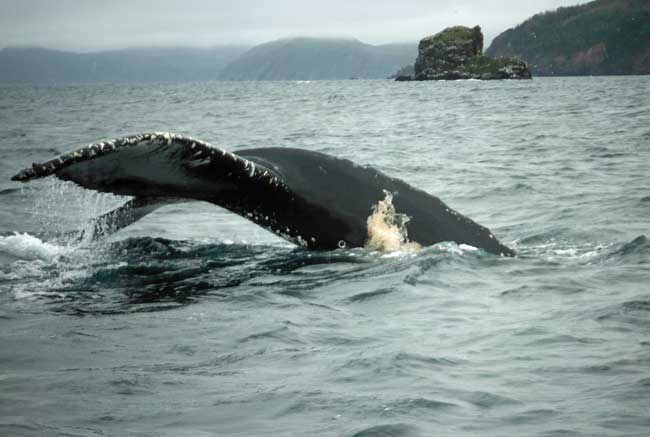
Joe and I came to Newfoundland to see these creatures gorge in icy waters, fattening themselves before their journey south when the summer ends.
In their winter home in the Caribbean, the whales change their focus from hunting and eating to mating, calving, and caring for their young.
With the arrival of spring, they migrate back to their feeding grounds and begin the cycle again.
The whales approached closer. Their gray-green flukes were just an arm’s reach from the edge of the craft. As they exhaled with a loud whoosh, a fishy mist from their blowholes fell over us.
The lead animal rolled just enough for her pectoral fin to break the surface and her right eye to take us in.
She watched us tourists silently for several seconds before her head sank below the surface and her flukes rose out of the water —a sign that the whales were diving deeper.
The tips of the creatures’ tails slipped below the surface, leaving two near-perfect circles of flat water.
“That’s their footprint,” Bob said quietly. “That’s how you know they were here.”
We sat for a few minutes, but the pair didn’t resurface. Joe and I did walk the Skerwink Trail that afternoon, where we were able to watch Captain Bob’s afternoon tour from the cliff edge.
There we shared in the joy of those passengers as a young whale breached directly in front of the boat.
Though we also saw the puffins in Elliston, we ran out of time to make it to Bonavista in daylight.
However, a digital photo of a lighthouse was no match for the hint of fishiness I smelled when I unpacked my raincoat after we returned home.
For just a moment, I was returned to the Zodiac, sharing a connection with a humpback.
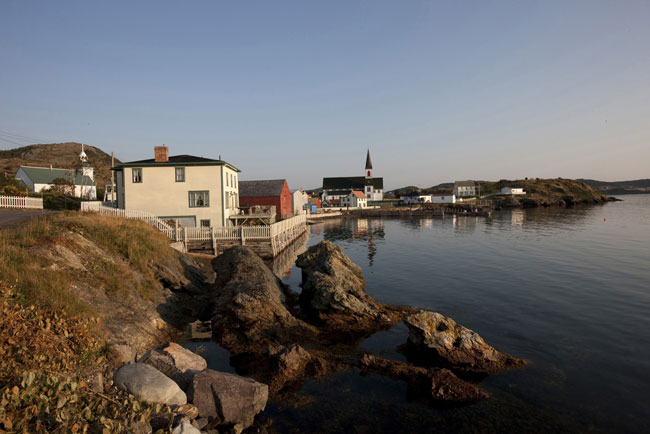
If You Travel to Newfoundland
Newfoundland and Labrador Official Tourism Website: https://www.newfoundlandlabrador.com
Trinity Eco-Tours: https://trinityecotours.com
Author Bio: Pamela Hunt is a freelance writer and editor, curious traveler, and amateur foodie living Burlington, Vermont.
